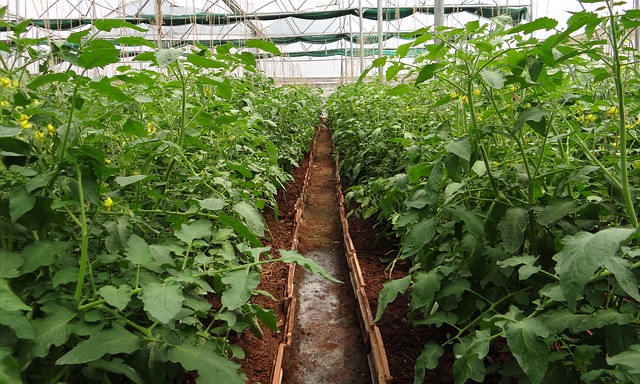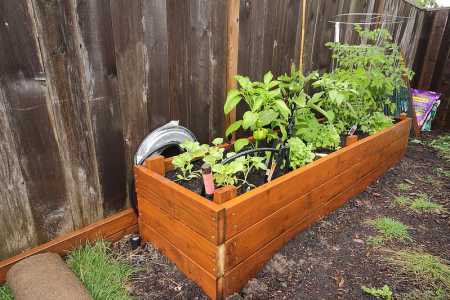It is generally recommended to cut off wilted tomato leaves as they can be a sign of disease in the plant.
Removing wilted leaves can help the plant concentrate its energy on healthy growth and fruit production. This can happen because of fungal or bacterial infection.
However, if the wilted happens because of water or stress, then cutting off one leave can’t help much.
Tomatoes are a staple in many home gardens, and for good reason – they are delicious, versatile, and relatively easy to grow.
However, even the most seasoned tomato growers may encounter problems with their plants from time to time.
There are several potential causes of wilted tomato leaves, including overwatering, underwatering, pests, and diseases.
Wilting is a natural process that can occur for a variety of reasons, and not all wilted leaves need to be removed. It is necessary to identify the cause of the wilting in order to take appropriate action to address the problem.
Why Tomato Leaves Wilted?

There are several potential causes of wilted tomato leaves. Some of the most common include:
- Overwatering: Tomato plant needs a constant supply of moisture, but they can be sensitive to excess water. If the soil is too wet, the roots may become oxygen-deprived, leading to wilted leaves.
- Underwatering: On the other hand, insufficient watering can also cause tomato leaves to wilt. When the soil is too dry, the plant may not be able to absorb enough moisture to keep the leaves hydrated.
- Pests: Certain pests, such as aphids and whiteflies, can feed on the sap of tomato plants, causing the leaves to wilt.
- Diseases: Some diseases, such as the tomato spotting wilt virus and fusarium wilt, can cause tomato leaves to wilt and become distorted.
- Environmental factors: Extreme temperatures or exposure to direct sunlight can also cause tomato leaves to wilt. Also, the black walnut tree can stunt the growth and wilt the leaves of the tomato. It’s advised not to plant tomatoes near the walnut tree.
It is important to identify the specific cause of the wilting in order to take appropriate action to address the problem. This may involve adjusting watering practices, applying pest control measures, or taking other steps to improve the plant’s overall health.
Also Read: How Deep Should a Raised Bed Be for Tomatoes?
Signs of Wilted Leaves on Tomatoes
Here are some signs to look for to identify wilted leaves on your tomato plants:
- Drooping leaves: Wilted leaves may appear droopy or limp, hanging down from the stem rather than standing upright.
- Yellow or brown leaves: Wilted leaves may turn yellow or brown, indicating that they are no longer receiving adequate moisture or nutrients.
- Dry or crisp leaves: Wilted leaves may feel dry or crisp to the touch, rather than being pliable and moist.
- Curling or distorted leaves: In some cases, wilted leaves may curl or become distorted in shape, rather than maintaining their normal appearance.
If you notice any of these signs of wilted leaves on your tomato plants, it is important to identify the cause of the problem and take appropriate action to address it. This may involve adjusting your watering practices, applying pest control measures, or taking other steps to improve the plant’s overall health.
Check this out: Is Chicken Manure Good for Tomato Plants?
How Often To Water Tomatoes?
The frequency of watering tomatoes will depend on several points, including the type of soil, the climate, and the size and age of the plant. Here are a few guidelines for watering tomatoes –
- Water regularly: To ensure that your tomato plants receive an adequate supply of moisture, it is important to water them regularly. In general, tomato plants will need to be watered once or twice a week, depending on the weather and soil conditions.
- Check the soil moisture level: The best way to determine whether your tomato plants need watering is to check the soil moisture level. Stick your finger about an inch into the soil; if it feels dry at that depth, it’s time to water.
- Avoid over-watering: Over-watering can be just as dangerous to tomato plants as under-watering. Too much water can cause the roots to become oxygen-deprived, leading to wilted leaves and other problems.
- Water at the base of the plant: To ensure that the water reaches the root zone, it is best to water the tomato plants at the base of the plant, rather than watering the leaves.
Must read: Should I Cut Off Yellow Leaves on Tomato Plants?
Pros and Cons of Cutting Off Wilted Leaves
There are both pros and cons to cutting off wilted leaves on a tomato plant. Some of the potential benefits of removing wilted leaves include –
Pros:
- Improved plant health: Removing wilted leaves can help the plant focus its energy on healthy growth and fruit production, rather than trying to support weak or damaged leaves.
- Reduced risk of pests and diseases: By removing wilted leaves, you may be able to reduce the risk of pests and diseases spreading to other parts of the plant.
- Increased energy production: By allowing the plant to focus its energy on healthy leaves, you may be able to increase the plant’s overall energy production and improve its growth.
On the other hand, there are also some potential drawbacks to cutting off wilted leaves, including:
Cons:
- Risk of damaging the plant: If the wilted leaves are not cut off properly, you may accidentally damage the plant or expose it to additional stress.
- Loss of leaves: Removing wilted leaves will result in a loss of leaves, which can affect the plant’s overall appearance and potentially impact its health.
Overall, it is important to consider both the pros and cons of cutting off wilted leaves and make a decision based on the specific circumstances of the plant.
Check this: Why Tomato Branches Curling Down?
When To Cut Off Wilted Tomatoes Leaves?
Deciding when to cut off wilted leaves on a tomato plant can be a tricky balancing act. On the one hand, removing wilted leaves can help the plant focus its energy on healthy growth and fruit production. On the other hand, removing too many leaves can stress the plant. Here are a few factors to consider when deciding when to cut off wilted leaves –
- The severity of the wilting: If the wilting is severe and affects a significant portion of the plant, it may be necessary to remove the wilted leaves to prevent the problem from spreading. However, if the wilting is minor and affects only a few leaves, it may be best to leave the leaves in place.
- Growth stage of the plant: The timing of leaf removal can also depend on the growth stage of the plant. During the early stages of growth, it may be best to leave the wilted leaves in place to allow the plant to establish itself. However, as the plant matures and begins to set fruit, it may be more beneficial to remove the wilted leaves to allow the plant to focus its energy on fruit production.
- The overall health of the plant: If the plant is otherwise healthy and producing fruit, it may be best to leave the wilted leaves in place until the plant has finished producing fruit. However, if the plant is struggling or showing other signs of stress, it may be necessary to remove the wilted leaves to help the plant recover.
Also Read: Best Potting Soil For Tomatoes?
How to Cut off Wilted Tomato Leaves?
If you have decided to cut off wilted leaves on your tomato plant, it is vital to do so carefully and correctly to avoid the risk of damaging the plant. Here are some steps to follow when cutting off wilted leaves –
- You will need a pair of clean, sharp scissors or pruning shears to cut off the wilted leaves.
- Look for leaves that are yellow, brown, or drooping, as these are likely to be wilted leaves.
- Use your scissors or pruning shears to cut off the wilted leaves at the base of the stem, as close to the main stem as possible.
Must Read:
- How to Turn Green Tomatoes Red in the Fall?
- Why Are My Tomato Flowers Falling Off?
- How long can a tomato plant go without water?
- How To Hand Pollinate Tomato Flowers To 3x Tomato Yield?
- Why Are Bottom of Tomatoes Turning Black?
Conclusion
Wilted leaves on a tomato plant can be a sign of stress or disease, and it is important to address the problem promptly to minimize any negative impacts on the plant.
In general, it is recommended to cut off wilted leaves as they can drain energy and nutrients from the plant, reducing its overall health and productivity. However, there may be situations where it is beneficial to leave wilted leaves in place, such as if the plant is still producing fruit or if the wilting is only temporary.
When deciding whether to cut off wilted leaves, it is important to consider the severity of the wilting, the growth stage of the plant, and the plant’s overall health.
It may also be helpful to consult with a local gardening expert or extension service for guidance specific to your situation.
By following best practices for caring for your tomato plants, you can help them stay healthy and productive throughout the growing season. With proper care, your tomato plants can thrive and provide you with a bounty of delicious, nutritious fruit.

